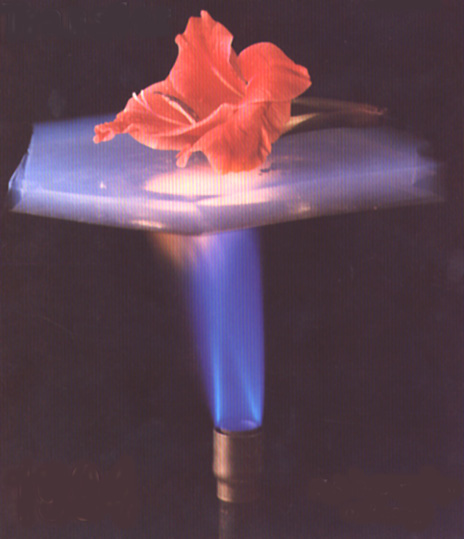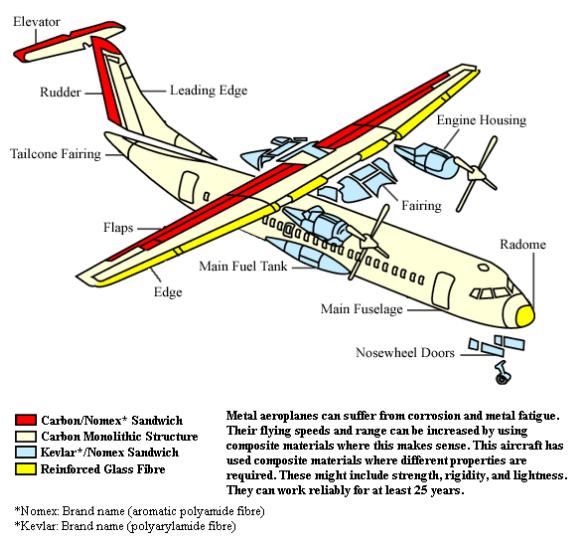The Moon Surface Materials
The bulk density of the Moon is 3.4 g/cc, which is comparable to that of (volcanic) basaltic lavas on the Earth (however, the bulk density of the Earth is 5.5 g/cc, because of the dense iron/nickel core).
 The Lunar
The Lunar
The Moon is coverered with a gently rolling layer of powdery soil with scattered rocks that is called the regolith; it is made from debris blasted out of the Lunar craters by the meteor impacts that created them. Each well-preserved Lunar crater is surrounded by a sheet of ejected material called the ejecta blanket.
Geological Composition
One striking difference between the Lunar surface material and that of Earth concerns the most common kinds of rocks. On the Earth, the most common rocks are sedimentary, because of atmospheric and water erosion of the surface. On the Moon there is no atmosphere to speak of and little or no water, and the most common kind of rock is igneous (“fire-formed rocks”). Geologically, the Lunar surface material has the following characteristics:
- The Maria are mostly composed of dark basalts, which form from rapid cooling of molten rock from massive lava flows.
- The Highlands rocks are largely Anorthosite, which is a kind of igneous rock that forms when lava cools more slowly than in the case of basalts. This implies that the rocks of the Maria and Highlands cooled at different rates from the molten state and so were formed under different conditions.
- Breccias, which are fragments of different rocks compacted and welded together by meteor impacts, are found in the Maria and the Highlands, but are more common in the latter.
- Lunar Soils contain glassy globules not commonly found on the Earth. These are probably formed from the heat and pressure generated by meteor impacts.
The Anorthosites that are common in the Lunar Highlands are not common on the surface of the Earth (The Adirondack Mountains and the Canadian Shield are exceptions). They form the ancient cores of continents on the Earth, but these have largely been obliterated by overlying sedimentary deposits and by plate tectonic activity.
Chemical Composition
The Lunar rocks may also be examined according to the chemicals that they contain. Such analysis indicates:
- They are rich in refractory elements, which are elements such as calcium (Ca), Aluminum (Al), and Titanium (Ti) that form compounds having high melting points.
- They are poor in the light elements such as hydrogen (H).
- There is high abundance of elements like Silicon (Si) and Oxygen (O).
The high concentration of rare metals like Titanium, and the availability of abundant amounts of Silicon and Oxygen has led to serious proposals about mining and manufacturing operations in the future for the Moon.
Moon rock describes rock that formed on the Earth’s moon. Rocks collected from the Moon have been measured by radiometric dating techniques. There are currently three sources of Moon rocks on Earth: 1) those collected by US Apollo missions; 2) samples returned by the Soviet Union Luna missions; and 3) rocks that were ejected naturally from the lunar surface by cratering events and subsequently fell to Earth as lunar meteorites.
During the six Apollo surface excursions, 2,415 samples weighing 382 kg (842 lb) were collected, the majority by Apollo 15, 16, and 17. Almost all lunar rocks are depleted in volatiles and are completely lacking in hydrated minerals common in Earth rocks. In some regards, lunar rocks are closely related to Earth’s rocks in their isotopic composition of the element oxygen. In contrast to the Earth, large portions of the lunar crust appear to be composed of rocks with high concentrations of the mineral anorthite. The mare basalts have relatively high iron values. The magnesian suite (or “mg suite”) consists of dunites (>90% olivine), troctolites (olivine-plagioclase), and gabbros (plagioclase-pyroxene) with relatively high Mg/Fe ratios in the mafic minerals and a range of plagioclase compositions that are still generally calcic (An86-93).
The alkali suite is so-called because of its high alkali content — for moon rocks. The alkali suite consists of alkali anorthosites with relatively sodic plagioclase (An70-85), norites (plagioclasse-orthopyroxene), and gabbronorites (plagioclase-clinopyroxene-orthopyroxene) with similar plagioclase compositions and mafic minerals more iron-rich than the magnesian suite. The trace element contents of these minerals also indicates a KREEP-rich parent magma. The alkali suite spans an age range similar to the magnesian suite. Lunar granites are relatively rare rocks that include diorites, monzodiorites, and granophyres.
>
They consist of quartz, plagioclase, orthoclase or alkali feldspar, rare mafics (pyroxene), and rare zircon. U-Pb date of zircons from these rocks and from lunar soils have ages of 4.1-4.4 Ga, more or less the same as the magnesian suite and alkali suite rocks. Lunar breccias range from glassy vitrophyre melt rocks, to glass-rich breccia, to regolith breccias. The vitrophyres are dominantly glassy rocks that represent impact melt sheets that fill large impact structures. Glassy breccias form from impact melt that exit the crater and entrain large volumes of crushed (but not melted) ejecta. As noted above, the basin-forming impacts responsible for these breccias pre-date almost all mare basalt volcanism, so clasts of mare basalt are very rare.
You might also like
| Futuristic Materials part 2 Aerogel Several really amazing things to... | Meteorite What is a meteorite material ? A meteorite... | What is Fiber Optic? Fiber Optic - a Definition An optical fiber... | Composite Materials What is Composite Materials ? Composite... |




 Alloy Suppliers
Alloy Suppliers
 Aluminum
Aluminum
 Aluminum Extrusions
Aluminum Extrusions
 Copper-Brass-Bronze
Copper-Brass-Bronze
 Nickel
Nickel
 Magnets
Magnets
 Stainless Steel
Stainless Steel
 Stainless Steel Tubing
Stainless Steel Tubing
 Steel Service Centers
Steel Service Centers
 Titanium
Titanium
 Tungsten
Tungsten
 Wire Rope
Wire Rope